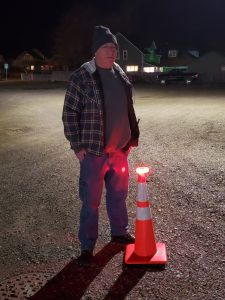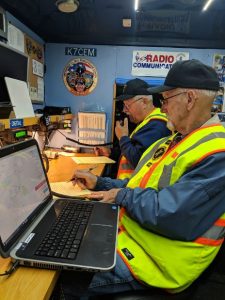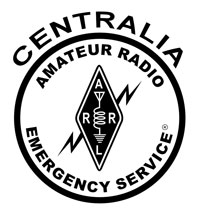 By the time people in the Pacific Northwest woke up on Friday, October 12, 1962, “Freda” had been on the move for some time. She formed as a typhoon 500 miles west of Wake Island in the central Pacific Ocean a week earlier. As she moved north into colder waters and interacted with the jet stream, Freda became an extratropical cyclone. Freda arrived in Northern California as winds pushed her ashore, delaying some games in the 1962 World Series between the San Francisco Giants and the New York Yankees.
By the time people in the Pacific Northwest woke up on Friday, October 12, 1962, “Freda” had been on the move for some time. She formed as a typhoon 500 miles west of Wake Island in the central Pacific Ocean a week earlier. As she moved north into colder waters and interacted with the jet stream, Freda became an extratropical cyclone. Freda arrived in Northern California as winds pushed her ashore, delaying some games in the 1962 World Series between the San Francisco Giants and the New York Yankees.
Freda officially became “Hurricane Freda” when she touched landfall in the United States. Hurricanes, cyclones and typhoons are basically the same types of storms, often labelled differently by their windspeed . Storms in the Atlantic Ocean are usually identified as hurricanes with the storms in the Pacific Ocean called typhoons or cyclones
Now on land, Hurricane Freda hooked straight north as she moved into southwest Oregon, bringing a pressure which would be equivalent to a Category 3 hurricane on the Saffir-Simpson hurricane scale. As Friday, October 12th dawned, few in the Pacific Northwest were aware of what the day would bring. Oregon’s Cape Blanco soon measured wind gusts at 145 miles per hour while the Naselle Radar Station in the Willapa Hills of southwest Washington logged winds of 160 miles per hour. Wind gusts in Portland, Oregon reached 116 mph, while Olympia officially measured 88mph.
Those living in eastern Washington experienced damaging high winds as well. When the roof blew off a neighbor’s house where I lived in the town of Sunnyside in the Yakima Valley, my mother hustled me into a basement room with no windows for the next few hour. Damaging winds reached as far inland as Spokane.
At lease 46 fatalities were attributed to Freda, more than for any other Pacific Northwest weather event. Injuries went into the hundreds. In less than 12 hours, more than 11 billion board feet of timber was blown down in northern California, Oregon and Washington. Estimates put the dollar damage at over $2 Billion in today’s dollars. The Metropolitan Life Insurance company named the Columbus Day Storm the nation’s worst natural disaster of 1962 as Hurricane Freda was labelled as the “most powerful extratropical cyclone recorded in the U.S in the 20th century.”
Few places in the United States are immune to natural disasters and the Pacific Northwest is no exception. While wildfires, floods and earthquakes occur more often, we manage to get a volcanic eruption and even the occasional hurricane from time to time. The next time someone tells you we don’t get hurricanes in the Pacific Northwest, relate the story of Hurricane Freda. For a little kid hustled into the basement after witnessing the neighbor’s roof blown off their house, it was an experience never to be forgotten.



 Our Centralia Amateur Radio Emergency Service team conducts field exercises about five or six times each year. It is always interesting to see where we do well and to discover those areas where more training is required. We would probably do more field exercises but each one we do seems to lead to lots of indoor training trying to perfect our skills. No exercise is 100% successful but they are never a complete failure either, and I like that.
Our Centralia Amateur Radio Emergency Service team conducts field exercises about five or six times each year. It is always interesting to see where we do well and to discover those areas where more training is required. We would probably do more field exercises but each one we do seems to lead to lots of indoor training trying to perfect our skills. No exercise is 100% successful but they are never a complete failure either, and I like that. designed around an “almost” real disaster. On a winter Saturday morning, a two inch gas pipe ruptured. In our exercise, it also caused an explosion knocking out communications systems and the power grid. It also damaged our city Emergency Operations Center. Only two weeks before, a real gas pipe ruptured in the downtown area causing evacuations before the system was shut down. No fire or explosion but the threat was very real. This is one busy scenario. The ARES deployment notification went out, a net control was established and command & control was set up inside the main Riverside Fire Authority building. We deployed one of our two ARES comm vans as well and requested they attempt to set up HF communications with the Washington State EOC.
designed around an “almost” real disaster. On a winter Saturday morning, a two inch gas pipe ruptured. In our exercise, it also caused an explosion knocking out communications systems and the power grid. It also damaged our city Emergency Operations Center. Only two weeks before, a real gas pipe ruptured in the downtown area causing evacuations before the system was shut down. No fire or explosion but the threat was very real. This is one busy scenario. The ARES deployment notification went out, a net control was established and command & control was set up inside the main Riverside Fire Authority building. We deployed one of our two ARES comm vans as well and requested they attempt to set up HF communications with the Washington State EOC.